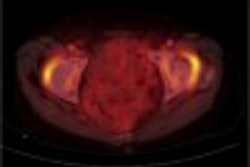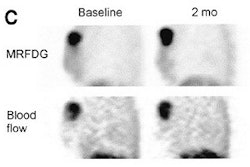CHICAGO - In a cruel twist of irony, obesity itself places the only patients who would undergo bariatric surgery at increased risk of perioperative and postoperative complications. However, radiologists can enhance the safety of both the surgery and the convalescence, according to a presentation at the 2003 RSNA meeting.
For example, postoperative mobility is a key component of preventing deep vein thrombosis and pneumonia. However, for bariatric surgery candidates, those with a body mass index of 40 or more, even preoperative mobility is a challenge. It is even more difficult after surgery, said Dr. Elmar Merkle, associate professor of radiology at Duke University Medical Center in Durham, NC.
“Why is a radiologist talking about bariatric surgery? Because we see all the complications,” said Merkle. “The imaging studies we order preoperatively, and our postoperative follow-up imaging, can help identify and address patients’ risks.” He participated in the research while at the University Hospitals of Cleveland, OH.
He and the investigative team followed 335 consecutive patients who underwent Roux-en-Y gastric bypass surgery, between March, 1998, and December, 2002. Roux-en-Y is typically performed laparoscopically.
All patients underwent standard postoperative imaging, which consisted of an upper gastrointestinal study within the first 48 hours after surgery to determine whether patients have developed leaks along the line of the bypass staple. Preoperative imaging was targeted at assessing obesity-related health problems, such as abdominal ultrasound to check for gallstones and chest x-rays to screen for respiratory problems. The surgeons who conducted the surgeries also requested additional imaging studies as warranted.
The investigators followed the patients from three months to five years, with other imaging studies requested as indicated, depending on the type and onset of each complication recorded in this retrospective study.
Among these patients, 57 (17.1 percent) developed complications, 17 of whom were rehospitalized within 30 days after discharge. Two patients died. Eight developed anastomotic leaks, six had anastomotic stenosis, five experienced bowel obstruction within 30 days after surgery, and five developed staple line leaks. Additionally, four had bleeding, three patients developed pulmonary emboli, two had pneumonia, two had pouch ulcers, and one each had sepsis, wound dehiscence, and esophageal injury.
The role of the radiologist in the care of these patients is obvious, according to Merkle. He noted that more than 90 percent of all patients with postoperative complications underwent imaging studies.
By Paula MoyerAuntMinnie.com contributing writer
December 2, 2003
Copyright © 2003 AuntMinnie.com



















